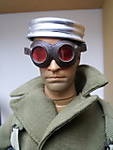Quoted Text
Quoted Text
Quoted Text
So what specifically are you refuting , Robin ?
Keep your emotions out of the answer , please . 
The internet has made it possible for various strange people to make their voice heard by a worldwide audience.
cough cough 
I don't see any specific counter to the video's numbers , nor does the video maker dismiss the effectiveness of air attacks on morale , maneuvering etc .
Lke Gerald inquired : Did you watch the entire video ?
Thank you for picking one single sentence out of those that I wrote.
I was merely stating that I do not take everything at face value.
The analysis of F-86's attacking Soviet tanks was interesting, the AA had a high probability of hitting a fast moving target while the aircraft had huge difficulties hitting the tank.
I do not have a copy of the book referred to in the video and I do not have access to the sources upon which the book is based so I can not verify or disprove anything of what the book says.
I am simply sceptical about a lot of things pushed out in social media. Take the Sherman and tank warfare "expert" and all his claims about that tank as an example.
I am not quite sure that I understood how aircraft could have such a devastating effect on non-armoured vehicles while they seemed almost totally unable of hitting a tank.
In the beginning he presented hit ratios, gunfire hit with 25% which I consider to be OK.
Rockets were 89% within 140 meters but I failed to pick up percentages for shorter distances. How many were within 35 metres for instance.
I assume that the accuracy ratio for bombs is based on bombs actually dropped against tanks. Level bombing from high altitude isn´t very accurate so I presume that those bombs have been excluded. It would have been interesting to see accuracy numbers for bombs dropped at low level or dive-bombing.
The comment that AA is more about scaring the aircraft off target than about actually hitting the aircraft. Especially when contrasted with the calculations about F-86 vs JS-3 ...
/ Robin






































